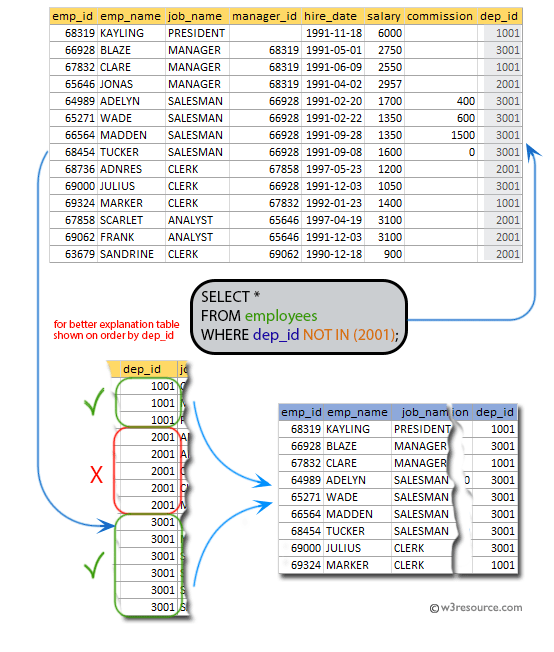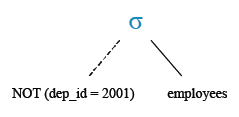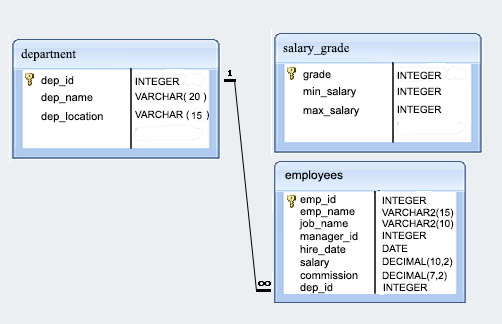SQL Exercise: List the employees not in department 2001
[An editor is available at the bottom of the page to write and execute the scripts.]
11. From the following table, write a SQL query to find those employees who do not belong to the department 2001. Return complete information about the employees.
Sample table: employees
Pictorial Presentation:
Sample Solution:
SELECT *
FROM employees
WHERE dep_id NOT IN (2001);
Sample Output:
emp_id | emp_name | job_name | manager_id | hire_date | salary | commission | dep_id --------+----------+-----------+------------+------------+---------+------------+-------- 68319 | KAYLING | PRESIDENT | | 1991-11-18 | 6000.00 | | 1001 66928 | BLAZE | MANAGER | 68319 | 1991-05-01 | 2750.00 | | 3001 67832 | CLARE | MANAGER | 68319 | 1991-06-09 | 2550.00 | | 1001 64989 | ADELYN | SALESMAN | 66928 | 1991-02-20 | 1700.00 | 400.00 | 3001 65271 | WADE | SALESMAN | 66928 | 1991-02-22 | 1350.00 | 600.00 | 3001 66564 | MADDEN | SALESMAN | 66928 | 1991-09-28 | 1350.00 | 1500.00 | 3001 68454 | TUCKER | SALESMAN | 66928 | 1991-09-08 | 1600.00 | 0.00 | 3001 69000 | JULIUS | CLERK | 66928 | 1991-12-03 | 1050.00 | | 3001 69324 | MARKER | CLERK | 67832 | 1992-01-23 | 1400.00 | | 1001 (9 rows)
Explanation:
The said query in SQL that selects all columns from the 'employees' table where the dep_id is not equal to 2001.
The "WHERE" clause filters the results for all employees whose department ID does not match the value 2001
The "NOT IN" operator excludes those department that matched with the values of dep_id 2001.
Relational Algebra Expression:
Relational Algebra Tree:
Go to:
PREV : Display the unique department with jobs.
NEXT : List the employees who joined before 1991.
Practice Online
Sample Database: employees
Have another way to solve this solution? Contribute your code (and comments) through Disqus.
What is the difficulty level of this exercise?
Test your Programming skills with w3resource's quiz.



